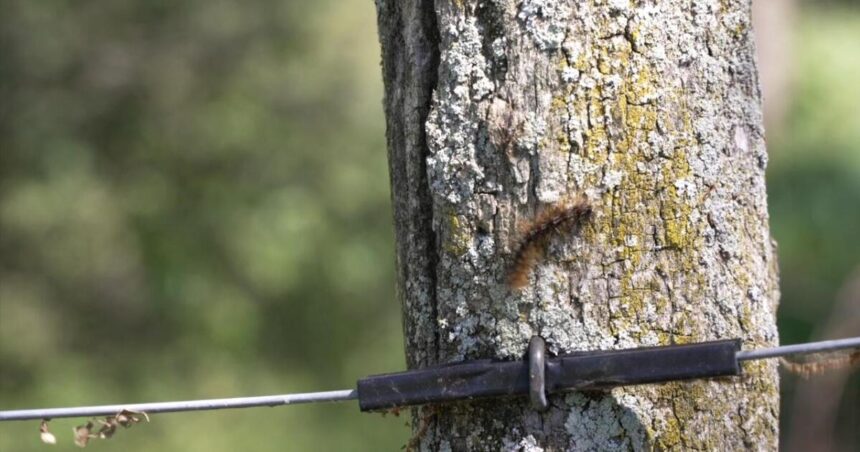They’re nature’s “literal” party poopers, as per the Michigan Department of Natural Resources. This spring, the spongy moth has emerged, munching through the leaves of hardwood trees on the southwest side of the state.
The invasive species has a preference for oak tree trunks, where caterpillars hatch from fuzzy, tan-colored egg clusters in April. They continue to feast through late June, dropping BB-sized droppings (known as frass) as they eat.
Terry and Chris Bennett observe the relentless infestation on their rural property in western Michigan, with worms crawling abundantly on the trees. Despite their efforts to remove egg clusters and crush caterpillars during their walks in the woods, the population remains overwhelming, leaving the trees susceptible to disease.
This year’s caterpillar invasion appears to be especially severe, with caterpillars even squished on the roads, altering the road color. The decline in spongy moth populations statewide, however, has been noted by the Michigan Department of Natural Resources, attributing it to decreased defoliation.
While the department anticipates a continued decline in population for 2024, some defoliation is expected in southwest Michigan, including the Bennett’s area.
Despite the statewide decline, the Bennetts are concerned about the ongoing infestation and await potential interventions from the state or county to manage the situation.
The pesticide Btk (Bacillus thuringiensis var. kurstaki) can be used to target spongy moth caterpillars without harm to humans or animals.
Here are some tips to prevent the spread of the spongy moth:
- Inspect decks, outdoor furniture, fences, and trees
- Scrape egg masses into soapy water or dispose of them by burning or burying
- Sweep caterpillars into soapy water using a broom and let them soak overnight
- Create a tree trunk trap with burlap to catch caterpillars climbing the trees
This article was originally written by Sam Landstra at Scripps News West Michigan.





